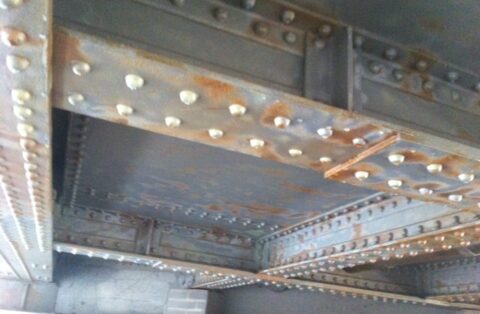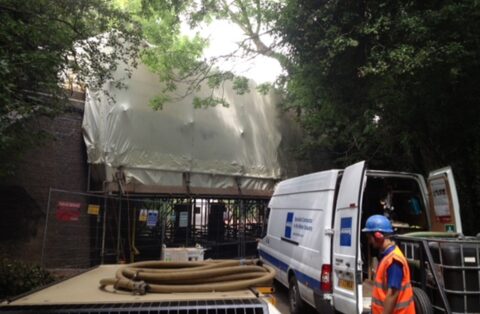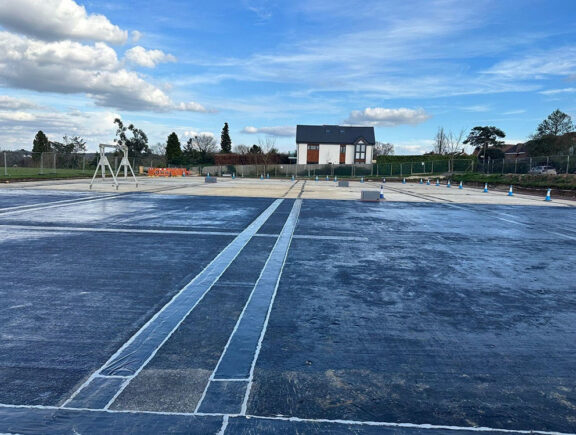The method of preparation used Quill Blasting, followed by a final dry flash blast to enable us to achieve the SA2.5 standard of prep. All steelwork repairs that we are instructed to do were carried out prior to the flash blast and the Sika Icosit 6630 coating system finally applied.
Double phase:
- Copt Oak Bridge – part road closure required.
- Huncote Road Bridge – part road closure required.
Single phase:
- Forest Road Bridge – full road closure required. Single Phase.
Works included:
- Set up traffic management system
- Set up pedestrian walkway segregation
- Erect scaffolding and encapsulate
- Dustless quill blasting
- Pressure washing bridge structure
- Flash (dry) blasting
- Remove dust and debris
- Spray applied corrosion resistant coating
Works began with the set-up of traffic and pedestrian management system which consisted of 2-way traffic lights to the roadways beneath the bridges to allow for the works to be carried out to one half of the bridge. Concrete barriers were installed to protect the scaffold structure from the passing traffic and barriers installed along the walkways over the bridge to segregate pedestrians from the scaffold structure.
A working compound was set up beside the structures to allow for the blasting equipment and welfare facilities. Blasting works were carried out with the use of a quill dustless blasting system to allow us to contain the lead based paint which was used to coat the bridge structure. The spent blast media was cleaned daily, double bagged and disposed of in a specialist hazardous waste skip. Following completion of the dustless blasting the structures were flash blasted using a dry blast system to remove the gingering of the steel which specified on the technical data sheets for the product.
The enclose and bridge structure was then cleared of any dust and debris and 3 coats of paint were spray applied which consisted of primer, base and or UV stable top coat. During the works, quality assurance checks were made to ensure the thickness of the coating was correct and to also ensure that the correct profile on the steel was achieved. Once all coating works were completed, final quality checks were made and signed by the council. The scaffolding structure was removed and the whole procedure was then repeated for the second half of the bridge for all 3 bridges to complete the project.











